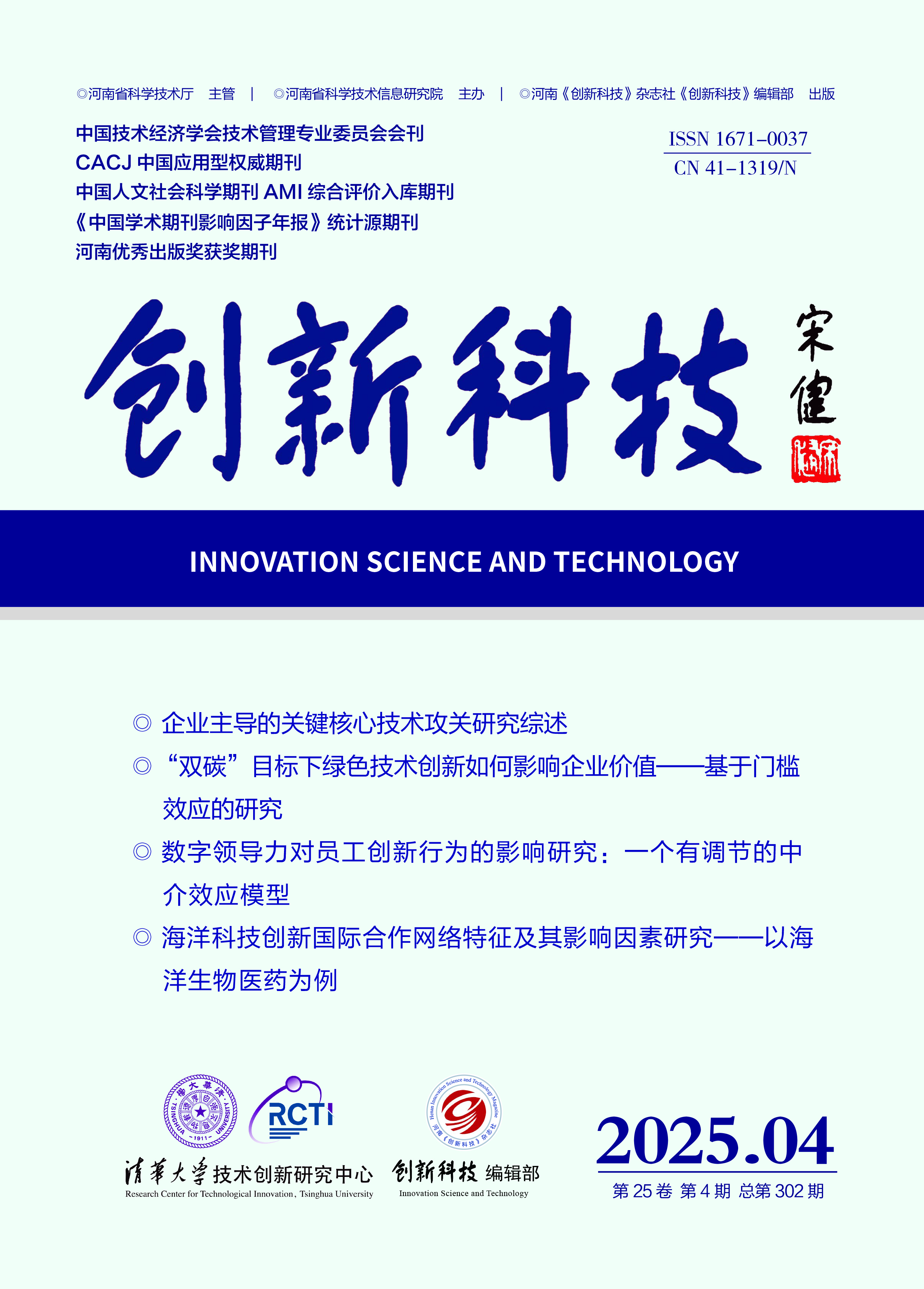INNOVATION SCIENCE AND TECHNOLOGY
Quick Search

All publication are peer-review
Peer review will take the from of double-blind review Judge objectively and impartially
There is no conflict of interest for the reviewer
Review articles shall be kept strictly confidential prior to publication
Intellectual Property Management
Research on the Impact of Intellectual Property Protection on the Green Innovation Efficiency of Manufacturing Enterprises
—A Two-stage Innovation Value Chain Perspective
Su Ping1, 2 , Yu Han1
(1.Chongqing Intellectual Property School, Chongqing University of Technology, Chongqing 400054, China; 2.Research Center for Science and Technology Innovation and Intellectual Property, Chongqing University of Technology, Chongqing 400054, China)
Abstract: Against the backdrop of the accelerating global transition towards green and lowcarbon development, green innovation has emerged as a pivotal driver for high-quality economic growth. To delve deeper into the impact mechanisms of intellectual property protection on the green innovation efficiency of manufacturing enterprises, this study utilizes panel data from Ashare listed manufacturing companies in China from 2009 to 2022. Adopting a two-stage innovation value chain perspective, the research segments green innovation efficiency into green technology R&D efficiency and green achievement transformation efficiency. Employing a two-way fixed effects model and a mediation effects model, the study conducts an empirical analysis. The findings reveal that intellectual property protection significantly enhances both green technology R&D efficiency and green achievement transformation efficiency in manufacturing enterprises. Mechanism tests indicate that intellectual property protection indirectly improves green innovation efficiency by increasing R&D investment intensity and alleviating financing constraints. Heterogeneity analysis demonstrates that the promoting effect of intellectual property protection on green innovation efficiency varies significantly across different types of enterprises, regions, and industries. Based on these findings, this study proposes the following policy recommendations. Firstly, further refine the intellectual property protection system and optimize the patent approval process. Secondly, promote the construction of industry-university-research cooperation platforms to achieve resource sharing and technological collaboration. Thirdly, optimize the financing ecosystem through deepened green finance reforms, including launching dedicated low-interest loans and green bond issuance mechanisms to ensure sustained funding for green technology adoption. Fourthly, implement differentiated policies in response to enterprise types and regional heterogeneity to boost regional collaborative innovation capabilities and accelerate the green and low-carbon transformation of the manufacturing industry. This study not only enriches the literature on the relationship between intellectual property protection and the green innovation efficiency of manufacturing enterprises, but also makes significant theoretical and practical contributions from multiple perspectives. Based on the research findings, it puts forward targeted policy recommendations, providing policymakers with theoretical and practical references. Committed to promoting the green innovation development of enterprises, this research holds great theoretical and practical significance for optimizing the green innovation environment of China's manufacturing industry, facilitating regional coordinated development, and achieving the "dual carbon" strategic goals.
Key words: intellectual property protection; green innovation efficiency; green technology achievement transformation; two-stage innovation value chain